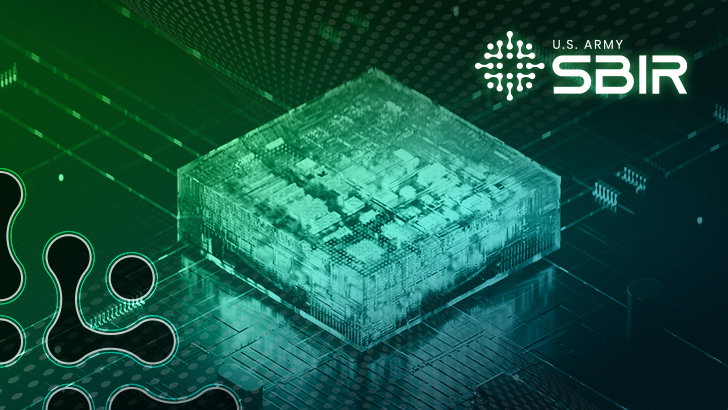

Objective
Modern and future battlefields will see increasing use of automated platforms. However, single-use, leave-behind or unattended U.S. military systems require sufficient protection against hardware and software components from reverse engineering. Currently, there is not yet a cost-effective or adequate solution for this requirement.
Practices such as traditional physical anti-tamper methods, or warfighters having direct physical access to attempt platform destruction, are not feasible for the new ecosystem of low-cost, high-count platforms. Conversely, digital erasure with its low barrier-to-entry, in terms of cost and implementation, is the suitable alternative.
Description
Through reverse engineering techniques, adversaries can extract information stored in non-volatile memory from abandoned, misused, single-use, leave-behind or unattended U.S. military systems. Furthermore, utilizing volatile memory storage (i.e., Random Access Memory, RAM) for a system’s Critical Program Information (CPI), proprietary information, or intellectual property (IP) is not an adequate design technique to ensure the information is unrecoverable as new, sophisticated techniques are able to “freeze” binary signatures etched onto the storage medium hardware.
These capabilities enable adversaries and other nation-state actors to potentially modify, exploit, exfiltrate or leverage U.S. military systems, including their design and information, risking Original Equipment Manufacturer (OEM) business advantages and the U.S. military’s technological superiority. However, systems designed with reconfigurable logic hardware (e.g., Field Programmable Gate Arrays, FPGAs) instead of Application Specific Integrated Circuits (ASICs) to execute system functions provides a hardware fabric that can be completely erased to protect sensitive designs and information from being reverse engineered.
Phase I
This is a Direct to Phase II topic (DP2). Small businesses, at the time of proposal, must have a solution capable of and, at the time of award, be able to demonstrate a proof-of-concept digital erasure solution that can modify the FPGA fabric to ensure the original data within the memory is no longer recoverable.
Phase II
As a Direct to Phase II, proposal submissions should include discussion on the following:
Phase III
Data security is a top priority for organizations across all industries, which has companies rushing to adopt and implement the latest capabilities in data destruction and sanitation. The moderately high CAGR of 14.3% indicates sustained growth. Complete the maturation of the company’s technology developed in Phase II and produce prototypes to support further development and commercialization.
Submission Information
For more information, and to submit your full proposal package, visit the DSIP Portal.

References:
Objective
Modern and future battlefields will see increasing use of automated platforms. However, single-use, leave-behind or unattended U.S. military systems require sufficient protection against hardware and software components from reverse engineering. Currently, there is not yet a cost-effective or adequate solution for this requirement.
Practices such as traditional physical anti-tamper methods, or warfighters having direct physical access to attempt platform destruction, are not feasible for the new ecosystem of low-cost, high-count platforms. Conversely, digital erasure with its low barrier-to-entry, in terms of cost and implementation, is the suitable alternative.
Description
Through reverse engineering techniques, adversaries can extract information stored in non-volatile memory from abandoned, misused, single-use, leave-behind or unattended U.S. military systems. Furthermore, utilizing volatile memory storage (i.e., Random Access Memory, RAM) for a system’s Critical Program Information (CPI), proprietary information, or intellectual property (IP) is not an adequate design technique to ensure the information is unrecoverable as new, sophisticated techniques are able to “freeze” binary signatures etched onto the storage medium hardware.
These capabilities enable adversaries and other nation-state actors to potentially modify, exploit, exfiltrate or leverage U.S. military systems, including their design and information, risking Original Equipment Manufacturer (OEM) business advantages and the U.S. military’s technological superiority. However, systems designed with reconfigurable logic hardware (e.g., Field Programmable Gate Arrays, FPGAs) instead of Application Specific Integrated Circuits (ASICs) to execute system functions provides a hardware fabric that can be completely erased to protect sensitive designs and information from being reverse engineered.
Phase I
This is a Direct to Phase II topic (DP2). Small businesses, at the time of proposal, must have a solution capable of and, at the time of award, be able to demonstrate a proof-of-concept digital erasure solution that can modify the FPGA fabric to ensure the original data within the memory is no longer recoverable.
Phase II
As a Direct to Phase II, proposal submissions should include discussion on the following:
Phase III
Data security is a top priority for organizations across all industries, which has companies rushing to adopt and implement the latest capabilities in data destruction and sanitation. The moderately high CAGR of 14.3% indicates sustained growth. Complete the maturation of the company’s technology developed in Phase II and produce prototypes to support further development and commercialization.
Submission Information
For more information, and to submit your full proposal package, visit the DSIP Portal.
References:
